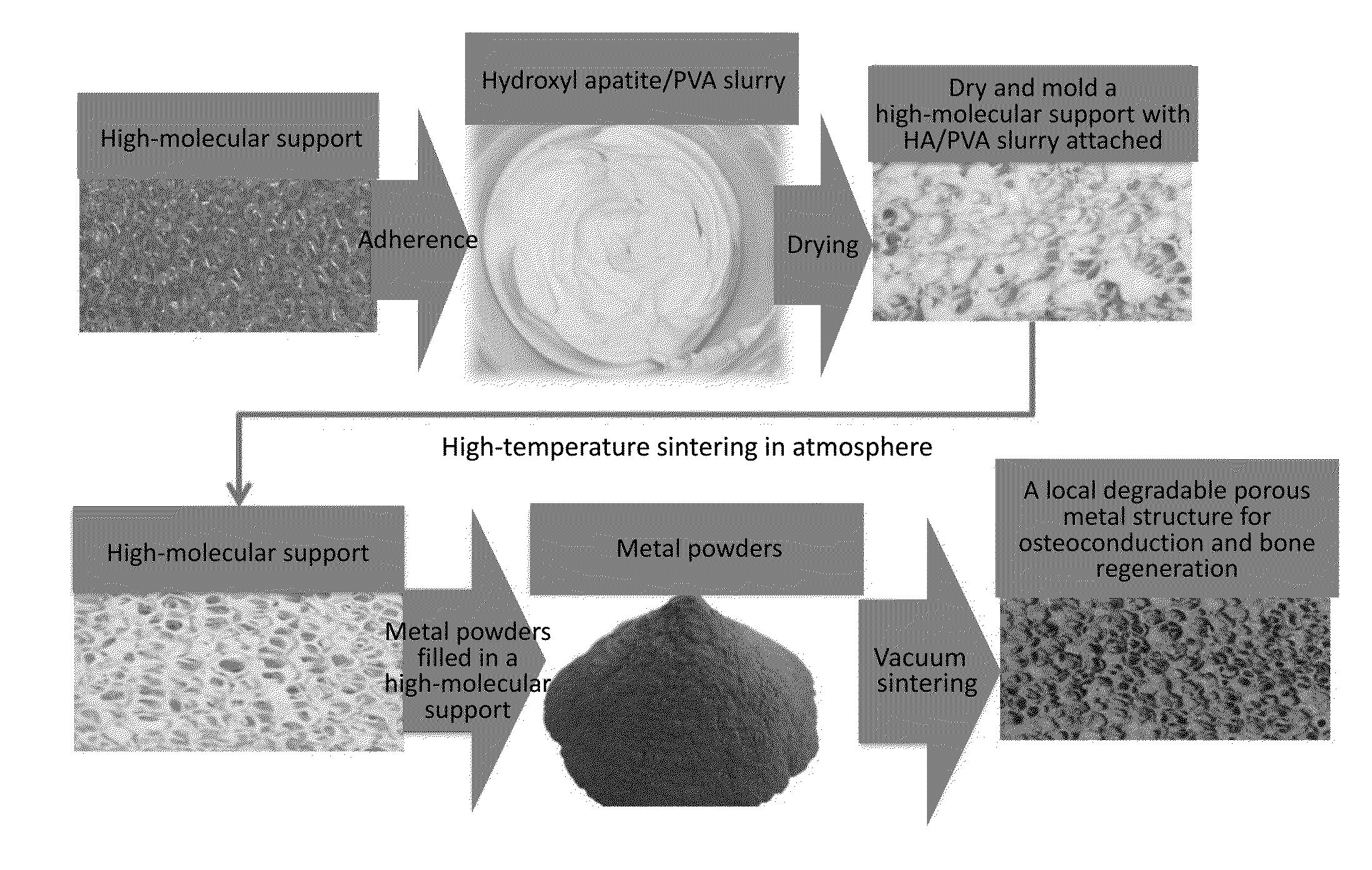Intervertebral Implant
a technology of intervertebral implants and porous materials, which is applied in the field of medical implants, can solve the problems of insufficient hardness and volume of implants, damage to osseous tissues, and inability to fusion independent of bone cement, and achieves the effects of good biocompatibility, osteoconduction and biodegradation, and economic efficiency
- Summary
- Abstract
- Description
- Claims
- Application Information
AI Technical Summary
Benefits of technology
Problems solved by technology
Method used
Image
Examples
Embodiment Construction
[0028]Please refer to FIG. 1 which illustrates an intervertebral implant in the present disclosure is made from metal powders and biodegradable material. In the present disclosure, the biodegradable material evolves a plurality of interconnected pores after experiencing a sintering process; the metal powders are bonded to the biodegradable material after filled in the interconnected pores and sintered. Held in the intervertebral implant, the biodegradable material, which depends on body fluid dissolution and cell-mediated biodegradation to join reconstruction of local osseous tissues or remote osseous tissues with the implant embedded, is gradually discharged by the metabolic system and allows a defective part to be replaced by newborn osseous tissues thoroughly. Meanwhile, the metal support evolves a permanent support based on osseous tissue engineering support material. Moreover, bio-absorbable material as a substitute of the biodegradable material is an alternative option based o...
PUM
| Property | Measurement | Unit |
|---|---|---|
| Diameter | aaaaa | aaaaa |
| Diameter | aaaaa | aaaaa |
| Size | aaaaa | aaaaa |
Abstract
Description
Claims
Application Information
 Login to View More
Login to View More - R&D
- Intellectual Property
- Life Sciences
- Materials
- Tech Scout
- Unparalleled Data Quality
- Higher Quality Content
- 60% Fewer Hallucinations
Browse by: Latest US Patents, China's latest patents, Technical Efficacy Thesaurus, Application Domain, Technology Topic, Popular Technical Reports.
© 2025 PatSnap. All rights reserved.Legal|Privacy policy|Modern Slavery Act Transparency Statement|Sitemap|About US| Contact US: help@patsnap.com



